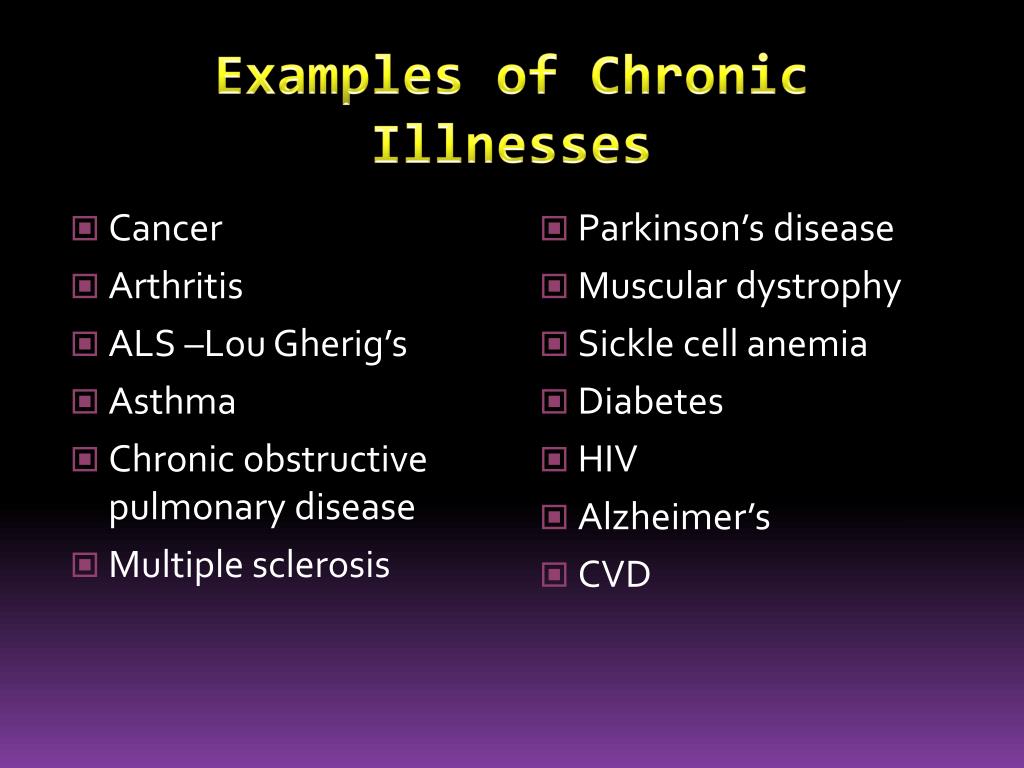

Adolescents may struggle with their inability to achieve independence if they require assistance from parents and others for many of their daily needs parents should encourage self-reliance within the adolescent’s capability and avoid overprotection. School-aged children may be most affected by the inability to attend school and form relationships with peers. Children with chronic conditions that appear in infancy will respond differently than children who develop conditions during adolescence. Effects on the childrenĬhildren’s response to a chronic health condition largely depends on their developmental stage when the condition occurs. read more or visual impairments, cerebral palsy Cerebral Palsy (CP) Cerebral palsy refers to a group of nonprogressive conditions characterized by impaired voluntary movement or posture and resulting from prenatal developmental malformations or perinatal or. Many cases are detected by screening, but hearing loss should be suspected if children. read more, hearing impairments Hearing Impairment in Children Common causes of hearing loss are genetic defects in neonates and ear infections and cerumen in children. Some children are asymptomatic, and others have. Although the cause is not known, low folate levels during pregnancy increase risk. Examples of chronic physical disabilities include meningomyelocele Spina Bifida Spina bifida is defective closure of the vertebral column. read more, and depression Depressive Disorders in Children and Adolescents Depressive disorders are characterized by sadness or irritability that is severe or persistent enough to interfere with functioning or cause considerable distress. The 3 types of ADHD are predominantly inattentive, predominantly hyperactive/impulsive. read more, attention-deficit/hyperactivity disorder Attention-Deficit/Hyperactivity Disorder (ADD, ADHD) Attention-deficit/hyperactivity disorder (ADHD) is a syndrome of inattention, hyperactivity, and impulsivity. Early symptoms are related to hyperglycemia and include polydipsia. read more, diabetes mellitus Diabetes Mellitus in Children and Adolescents Diabetes mellitus involves absence of insulin secretion (type 1) or peripheral insulin resistance (type 2), causing hyperglycemia. Among birth defects, congenital heart disease is the leading cause of infant mortality. read more, congenital heart disease Overview of Congenital Cardiovascular Anomalies Congenital heart disease is the most common congenital anomaly, occurring in almost 1% of live births ( 1). It leads to chronic lung disease, exocrine pancreatic insufficiency. read more, cystic fibrosis Cystic Fibrosis Cystic fibrosis is an inherited disease of the exocrine glands affecting primarily the gastrointestinal and respiratory systems. It is common in the first few years of life and is typically caused. Examples of chronic illnesses include asthma Wheezing and Asthma in Infants and Young Children Wheezing is a relatively high-pitched whistling noise produced by movement of air through narrowed or compressed small airways. It has been estimated that chronic health conditions affect 10 to 30% of children, depending on the criteria. Chronic health conditions (both chronic illnesses and chronic physical disabilities) are generally defined as those conditions that last > 12 months and are severe enough to create some limitations in usual activity.


 0 kommentar(er)
0 kommentar(er)
